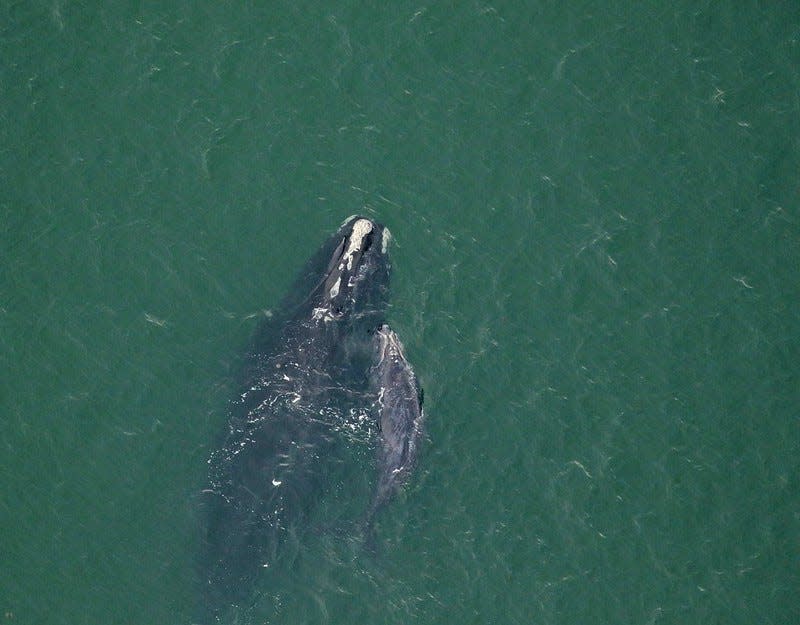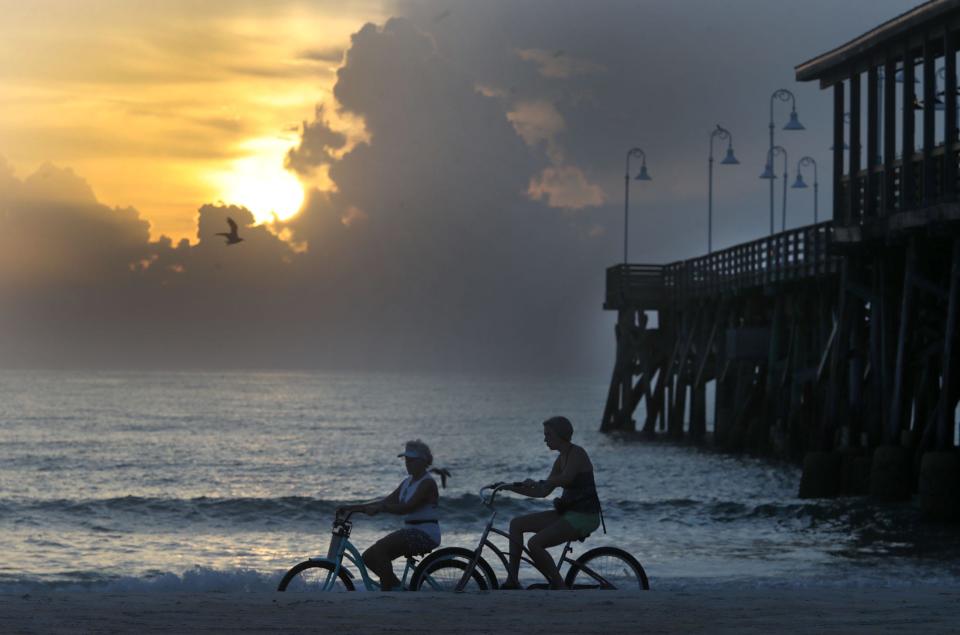It’s right whale season in Florida. Here are the best places to see one off the shore
Curious as to what those large, dark blobs in the ocean are? If you guessed a whale, you're right!
North Atlantic right whales have been making their annual trek to Florida for winter, opting for the scenic route along the Eastern coast instead of the chaotic I-95.
So far this winter, 47 North Atlantic right whales have been sighted between North Carolina and Florida, including the nine mothers with calves, 21 females and eight males, according to the Florida Fish and Wildlife Conservation Commission.
What are North Atlantic right whales?
Per the Florida Fish and Wildlife Conservation Commission, North Atlantic right whales are one of the three species of large baleen whales. These whales can weigh up to 140,000 pounds and get up to 52 feet in length.
Right whales get their name from whalers who claimed they were the "right" whales to hunt. They swam slowly in coastal waters, floated when dead, and yielded large amounts of oil and baleen. Due to this, they were almost hunted to extinction until it was banned in 1935.
Right whales are still one of the most endangered large whales in the world, which experts say the marine animals now face a high likelihood of extinction largely due to human activities. They are protected by the Endangered Species Act, Marine Mammal Protection Act and numerous laws.
On Jan. 9, NOAA Fisheries announced a partnership with the Center for Enterprise Modernization, a federally funded research and development center, to support endangered the whales' recovery efforts.
The partnership with MITRE will focus on the development of technologies and engineering approaches related to whale detection, vessel strike avoidance and on-demand or “ropeless” fishing gear. The $9.9 million investment is part of President Joe Biden’s "Investing in America" agenda and funded by the Inflation Reduction Act.
How many North Atlantic right whales are left in the wild?
Fewer than 400 whales remain the ocean. As TC Palm reports state, the nine born so far this calving season are less than a fifth of what conservationists say needs to be born yearly to keep the species afloat.
"It's estimated that in order to see the population grow we'd like to see 50, and there's no way that's going to happen," said Julie Albert, right whale sighting network coordinator for the nonprofit Blue World Research Institute in Cocoa, to TC Palm.
Whale advocacy groups were also highly concerned and outraged after federal officials announced this week that a critically endangered right whale calf had been spotted off the South Carolina coast with injuries so severe it's likely to die. It's one of the nine calves spotted so far this season.
Why do North Atlantic right whales go to Florida? Where do they go in the summer?
Are they just like snowbirds and prefer to vacation in the Sunshine State? Well, there is a more logical reason.
North Atlantic right whale's only known calving ground is located off the coasts of Georgia and Florida. According to the FWC, pregnant females migrate from their northern feeding grounds to the sheltered waters of the calving ground to give birth to their young.
Right whales spend the summer off in New England and Nova Scotia.
When is right whale season in Florida?

Right whales are typically sighted off Florida between November and April.
Where is the right whale habitat in Florida?
In Florida, North Atlantic right whales can be spotted from Jacksonville to Cape Canaveral.
What should I do if I spot a right whale in the wild?
If you see a right whale, FWC officials ask to report the sighting immediately by calling one of the following numbers.
U.S. Coast Guard on marine VHF Ch. 16
877-WHALE-HELP (942-5343)
888-97-WHALE (94253)(volunteer sighting network maintained by Blue World Research Institute)
When calling be prepared to give this information to the operator:
accurate time and location (e.g. GPS)
description of the sighting (how many whales, etc.)
Here's where you can spot North Atlantic right whales in Florida:

State tourism blog VisitFlorida gives whale watchers these suggestions for spotting right whales, either from the shore or on a boat tour:
The St. Augustine Beach Pier
The pier in Flagler Beach
The Sunglow Pier in Daytona Beach Shores
The Main Street pier in Daytona Beach
What are some tips for Whale Watching in Florida?
VisitFlorida also asked whale experts for tips when looking for the marine mammals, suggesting the following:
Keep binoculars handy, but you can scan the ocean without them from any high vantage point.
Whales are often in the company of dolphins, with sea birds overhead, so if you see either of those, take a closer look for whales.
The most likely way you'll spot a whale? First, you'll see a lot of cars and a clump of people on the shoreline pointing and looking at the sea with binoculars.
You can identify right whales by these characteristics: They spout a V-shaped spray of water, they have no dorsal fin, they have whitish patches of raised and roughened skin (called callosities) on top of their heads, and their tails are black on both sides.
Humpback whales migrate through the same waters on their way to their Dominican Republic winter waters, but they move through earlier and later than right whales.
Contributing reporting: Jim Waymer, Florida Today
This article originally appeared on Fort Myers News-Press: Right whales: Where they are in Florida, how to see them from shore

